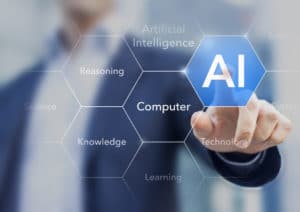Artificial intelligence is tackling unstructured data, including language: a huge undertaking, because language cannot be coded and decoded in the same way as the digital information circulating on the web.
So if, after reading this article, you exclaim : "Really greatHowever, that doesn't mean that you particularly enjoyed it; on the contrary, you may be using rhetoric and antiphrasis - a figure of speech consisting of saying the opposite of what you think.
In short, it all depends on the person expressing themselves, the degree of complicity they have with the person they are speaking to, the context, and so on. All this is a long way from the famous Shannon and Weaverwhich governs telecommunications.
In Relevance, Dan Sperber and Deidre Wilson state: "From Aristotle to modern semioticians, all the theories of communication have been based on a single model, which we will call the code model. According to this model, communicating means encoding and decoding messages. Recently, several philosophers, including Paul Grice and David Lewishave proposed a completely different model, which we will call the inferential model. According to the inferential model, communicating means producing and interpreting cues..
"Patrick bought Libération can mean so much: "Patrick bought a copy of Libération". that : "Patrick bought the company that publishes Libération. Ordinary readers have no trouble choosing the first meaning; but for friends of Patrick Drahi, the second is the obvious one.
According to Umberto Eco in Lector in fabula, "A text, as it appears in its linguistic surface (or manifestation), represents a chain of expressive devices which must be actualised by the addressee".
This actualisation of expressive devices, close to Grice's inference, takes place on four levels, which we will illustrate through the drama of Oedipus :
- The discourse structuresIt retains the text's linearity, while preserving its temporal shifts, digressions and other parentheses: unaware that the old man murdered by Oedipus is his father Laios, the spectator remains in suspense.
- The narrative structures redistributes the discourse into fundamental patterns, re-establishing the temporal logic of the operations: now convinced of the horror of patricide, the spectator gains access to the tragedy of an Oedipus cursed by the gods.
- The actancial structuresThe actors, stripped of their individuality, exist only through their actions: Oedipus successively occupies the roles of parricide, triumphant hero and cursed hero, and Laios becomes the instrument of this curse.
- The ideological structureswhere the The "actancial framework is invested with value judgements and (where) roles convey axiological oppositions". Where contemporary readers would condemn patricide, and Freudian analysts would diagnose some kind of complex, Sophocles condemned the ubiquity of the triumphant hero.
To take a more recent example, Stars War takes on a new dramatic dimension when we discover that Darth Vader is the father of Luke Skywalker and Princess Leia; as for the underlying ideology, it differs from one viewer to another, depending on the symbolic dimension we are trying - or not - to read into it.
In the Fashion Systemstripping She and the Jardin des Modes, Roland Barthes mentioned the "The phraseology of the newspaper (which) constitutes a connotative message, intended to convey a certain view of the world, phraseology that stems from Eco's ideological structures.
This final level of analysis was superimposed on those of denotation, connotation and metalanguage, which were part of rhetorical systems: it was impossible to access it without taking the previous levels into account, without relying on their meaning.
This whole article may seem very complex ... but it is in fact human language that is proving to be extraordinarily complex - escaping the basic coding and decoding of Shannon and Weaver, which nevertheless clutter up many marketing and advertising books.
The proliferation of today's 'languages', or rather 'parlers', does not make analysis any easier: between proselytising or refusing to use inclusive writing, intensive use of smileys and various slang, everyone adds their own personal touch to mark their difference or, on the contrary, to assert their belonging to a social group.
A few days later, I asked him what he was angry about: "Angry? Not at all, the keyboard on my smartphone was in capitals, I didn't change it", he replies: how will an AI interpret it?
Language is a real challenge for AIs: for a very long time, they will be unaware of its subtleties - approximate reception - and will only respond to our demands with discourse that is accessible to as many people as possible - creation of a new and unchanging language.th robotics.







